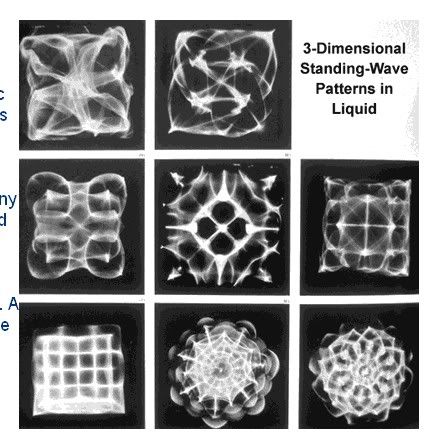That from a 2002 article. Unlike so many other promising breakthroughs this is one that has been widely implemented.
To further quote from the article: "The innovation, called Fractal Structure Circuit(TM) (FSC), uses fractalized conductor paths to replace the capacitors, inductors, and resistors in "RLC" circuits."
And another quote: ""Virtually every electronic device uses coils and capacitors to form RLC circuits. These discrete components are arranged by tried and true rules to get the circuit to perform as needed. What we've done is ask: can a fractal pattern, with its self-capacitance and self-inductance, be used to eliminate components and still get the equivalent RLC circuit? We've found that the answer is yes; and in most uses, especially at microwave frequencies, all components can be replaced by conductive fractal patterns or 3D structures."
And one more blurb from that article: " Looking at the Fractal Structured Circuit(TM) one sees, for example, a beautiful etched copper pattern replacing the usual traces connecting button or canned shaped capacitors and coils (or their SMT counterparts). "
Here is the link to that article.
Fractal Antenna Systems, Inc.
Apparently it is in wide use in cell phones, their antennas and some microwave circuits.
People are making homemade fractal HD antennas using coat hangers as one instance of using a common material.
I think this feature; fractuals should be used in some builds to take advantage of a wideband of frequencies and resonance. Maybe it will be useful in the Muller/Romerouk build.
For those that be interested google fractal circuits and fractal antennas.
I do not have the resources/space/knowledge to do any builds at the moment but I am curious enough to verify if a HD antenna can be made simply using fractals and common materials.
Any way something to consider.
-RG signing off
To further quote from the article: "The innovation, called Fractal Structure Circuit(TM) (FSC), uses fractalized conductor paths to replace the capacitors, inductors, and resistors in "RLC" circuits."
And another quote: ""Virtually every electronic device uses coils and capacitors to form RLC circuits. These discrete components are arranged by tried and true rules to get the circuit to perform as needed. What we've done is ask: can a fractal pattern, with its self-capacitance and self-inductance, be used to eliminate components and still get the equivalent RLC circuit? We've found that the answer is yes; and in most uses, especially at microwave frequencies, all components can be replaced by conductive fractal patterns or 3D structures."
And one more blurb from that article: " Looking at the Fractal Structured Circuit(TM) one sees, for example, a beautiful etched copper pattern replacing the usual traces connecting button or canned shaped capacitors and coils (or their SMT counterparts). "
Here is the link to that article.
Fractal Antenna Systems, Inc.
Apparently it is in wide use in cell phones, their antennas and some microwave circuits.
People are making homemade fractal HD antennas using coat hangers as one instance of using a common material.
I think this feature; fractuals should be used in some builds to take advantage of a wideband of frequencies and resonance. Maybe it will be useful in the Muller/Romerouk build.
For those that be interested google fractal circuits and fractal antennas.
I do not have the resources/space/knowledge to do any builds at the moment but I am curious enough to verify if a HD antenna can be made simply using fractals and common materials.
Any way something to consider.
-RG signing off




Comment